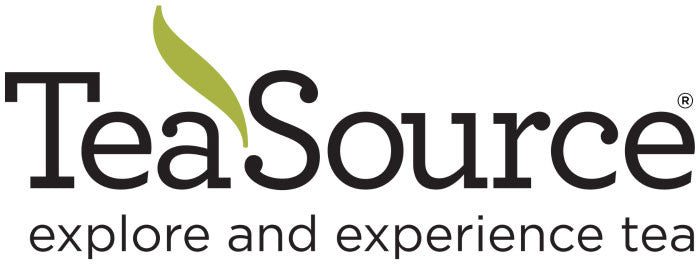-
The Chota Tingrai tea estate in Assam, India, was one of the first tea gardens (along with its sister tea estate Dinjoye) in upper Assam to be founded by native Indians (as opposed to being left over from the British colonial system). This brings a unique perspective to how they manage a tea community.
(photo courtesy of Mana-Organics)
Chota Tingrai is part of a fourth generation family owned Indian business. The business was founded in 1939 by Mr. Murleidhor Jalan, and is still operated and owned by the Jalan family today. They have a deep commitment to making sure their gardens are environmentally and socially sustainable. They have already converted one third of the Chota Tingrai tea estate to organic cultivation, and the rest of the garden is on the road to organic conversion in the near future.

(graphic courtesy of Mana-Organics)
India with Assam highlighted, the Chota Tingrai Estate is in the upper reaches of the Assam growing region.
(photo courtesy of Mana-Organics)
You can tell it is an Assam tea garden because of the long, straight, flat rows. In the background you can see the Chota Tingrai greenhouse, where they work with cuttings and seedlings for future plantings.
(photo courtesy of Mana-Organics)
The Chota Tingrai black tea factory, where they train local folks to join the management tea. In addition, all of the current Chota Tingrai field supervisors were promoted from within. This is indicative of the approach the Jalan family takes.

(photo courtesy Tony Rath)
A plucker in the Chota Tingrai fields. As with 99% of all Indian tea estates, the tea pluckers are women. In Chota Tingrai, they make a very strong effort to just employ local tea workers.
(photo courtesy of Mana Organics)
The bridge over the river Tingrai. The estate is named for a local forest called “Tingrai” which borders the estate. “Chota” in Hindi means small. So Chota Tingrai translates as “the little Tingrai forest.”
We are very pleased and excited to be working directly with Chota Tingrai and Mana-Organics.
Bill Waddington, founder
-
Phoenix Mountain Oolong, from Phoenix Mtn in Guangdong province, is composed of dark, long, sinewy leaves. When steeped, this oolong has tremendous floral aroma and a complex flavor with sweet, buttery, fruity (apple) notes and a wonderful silky/creamy texture. One of the best teas of the year. Very limited production.

Shop all of our Dan Cong Teas
Our supplier has two other names for this oolong: Ya She Xiang which roughly translates as fragrant bud. He also told us this tea is known as Duck Shit Oolong.
Below is the letter from the supplier.


-
Most people outside of Asia have never heard of Sikkim, much less been aware that there is some great tea grown there. But when you realize Sikkim shares a border to the south with Darjeeling and is just a tidge northeast of Assam, it makes sense that they make great tea there.
There is only one tea garden in Sikkim, Temi Tea Garden, and their story is fascinating.



In the foothills of the Himalayas, Temi is one of the most beautiful tea gardens you’ll ever see (photo courtesy of Nitin Ticku)
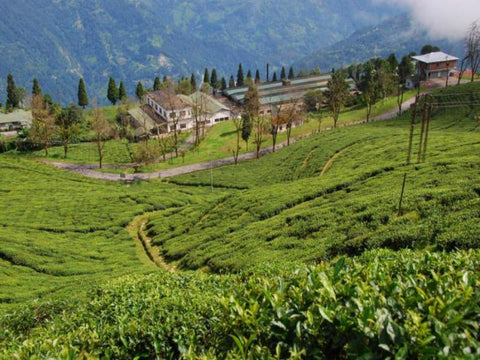
(photo courtesy of the Sikkim Tourism Development Corporation-STDC)
Tea was first introduced into Temi by the last king of Sikkim in the 1960’s as a source of employment for Tibetan refugees fleeing their homeland when China began occupying Tibet. Before that time the spot where the Temi Tea Garden stands was a Sherpa village: and this spot was a crossroads for travelers and traders for centuries.
Sikkim had been an independent kingdom for generations until it became a state of India in 1975.
Tea factory building (photo courtesy of the Temi Tea Garden)
For any tea geeks/travelers reading this, Temi is located in Ravangla in southern Sikkim, here:
Latitude: 27.234738°
Longitude: 88.417756°It’s a small tea garden, around 400 acres at above 3000’ elevation.
There is a bungalow where visitors can stay, contact the STDC for details.
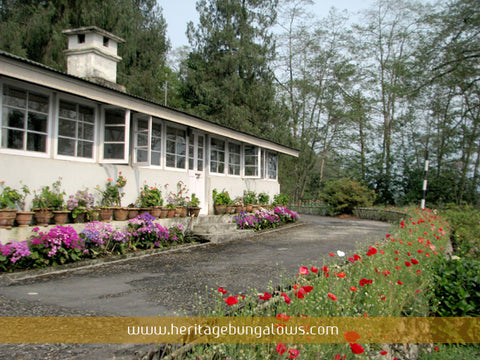 (photo courtesy of www.heritagebungalows.com)The visitor’s bungalow at Temi Tea GardenAnd they have had some pretty famous visitors at Temi.
(photo courtesy of www.heritagebungalows.com)The visitor’s bungalow at Temi Tea GardenAnd they have had some pretty famous visitors at Temi.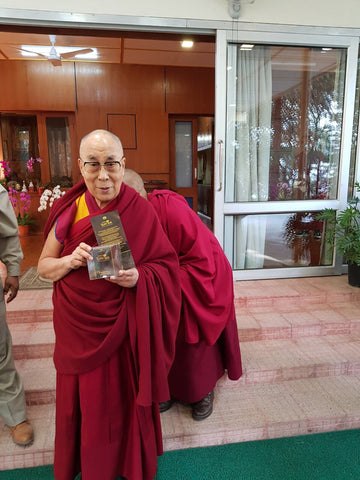
The Dalai Lama visiting the Temi Tea Estate, offering smiles and blessings (photo courtesy of the Temi Tea Garden)
The teas from Sikkim are still primarily hand-made. In the photo above, a tea worker is shaking the leaves, while the leaves are going through sun withering. (photo courtesy of the Temi Tea Garden)
(photo courtesy of the Temi Tea Garden)
Temi is operated by the Sikkim Tea Board working with a cooperative of local tea growers. They consider it their mission to be a positive force in their community by offering one of the most complete range of benefits for workers and their families in India; crèche, dispensary, clinic, school etc. And they pay the highest wages of any tea garden in India.
TeaSource is very proud to carry Temi teas and to help these folks get their teas and the word of their mission to the rest of the world.
Bill Waddington, founder
-
Shop Ms. Zhang's tea collection HERE.
I stumbled across YQY Tea Co. in Changsha, China in 2006. This tea company was formed by a husband wife team, Mr. Jian Bo Hua and Ms. Zhang Liu Mei in 1996 focusing on traditional teas from Hunan province. Over the years they have been one of our most reliable and hospitable tea suppliers.
Ms. Zhang Liu Mei and her husband Jian Bo Hua founded YQY Tea Co. in Changsha City, Hunan, China in 1996. They had a mission: to bring the quality and benefits of Hunan Green Tea and Hunan Dark Tea to people outside their region. Dark tea is an aged fermented tea (puer is an example). Ms. Zhang has a degree in Tea Science from Hunan University, and is well known throughout China as a tea botanist. I first met them at a tea show while traveling through Changsha in 2006. We spent most of the day together and then went back to their factory to drink tea through most of the night. Another case where business evolves into friendship, their daughter Joy has spent Christmas in Minnesota with my family.
A tea garden for employees at YQY’s factory in Changsha, Hunan, China.
An experimental garden at YQY’s headquarters that has a variety of different tea cultivars that the company uses for different teas.
Ms. Zhang and her daughter Joy on my first visit to Changsha in 2006.
A Buddhist nun performing a Chinese tea ceremony in 2006 in Changsha in YQY’s headquarters.
Some of Ms. Zhang’s tea fields in northern Hunan province.
An assortment of Ms. Zhang’s dark teas.
Ms. Zhang, and daughter Joy translating, conducting a tea tasting/workshop at TeaSource St Anthony in 2013.
Ms. Zhang and I cupping teas in Minnesota.
Wrapping up the Minnesota visit of Ms. Zhang and her daughter Joy.
YQY has been one of the most innovative and reliable companies I could hope to work with. I have learned so much from Ms. Zhang over the years, and I’ve gained new friends at the same time.
Bill Waddington, founder
-
I first ran across our China Black Special black tea (one of my favorite straight black teas) in Germany about 12 years ago, and fell in love with it. I spent the next four years trying to find the person who made it.
And in 2009 I finally met Amy Chen at a tea fair.

Amy Chen, plucking tea in one of her tea fields in Guangxi province, China
Amy Chen worked for the state owned tea company China Tea Import and Export Group, Guangxi, from the early 1990’s until 2004 (remember that mainland China is a communist country and until around 1999 almost all tea companies in China were operated by the government). In 2004 she broke off and formed her own private company, focusing exclusively on Guangxi teas. And wonderful teas they are.
Amy’s factory and fields are located in the mountainous southern part of Guangxi province, between 2000 and 4000 elevation. It’s some of the prettiest tea country I’ve ever seen.

Amy’s tea fields in southern Guangxi
Amy founded and has grown her company by adhering to an unwavering commitment to quality. To maintain that quality, Amy relies on a lot of hand work to make her best teas.

Amy’s tea fields being hand-weeded in Guangxi
Once the tea leaves the fields it heads to Amy’s tea factory in Nanning, Guangxi, China, where the emphasis on high quality and hand work continues.

Amy’s tea factory in Nanning, China
When you consider the worldwide players in the tea industry, Amy’s Guangxi tea company is pretty small. But personally I am astounded by what one woman (and about 16 great employees) has created and how they have grown in a short 14 years.
Once the tea leaves reach the factory the focus on quality and hand work continues.

Hand-sorting tea leaves that will eventually become Silver Needles
Slow withering is used to make Amy’s Bai Mu Dan tea, which we use as the base for all of our white tea blends like Machu Peach-U (left) and White Mango Ginger (right).


Amy tends to focus on high quality specialty teas unique to her homeland, Guangxi province. For instance, white teas such as Bai Mu Dan are noticeably different than white teas from Fujian because they are grown with their own unique Guangxi cultivar and within Guangxi’s unique environment.

Amy’s employees hand-sorting leaf for the white tea, Bai Mu Dan
There is also a big focus on Jasmine teas. Amy has been our first choice for Jasmine Dragon Phoenix Pearl (below) for a number of years and the quality has just been consistently great.

Amy makes teas unique to Guangxi (aka hong cha) like our China Black Special (below), which is full-bodied and exceptionally smooth with a hint of a sweet almost caramel note.

China Black Special tea is unlike any other tea I’ve tasted in China. That’s partly because it is Guangxi specific, and it’s partly because Amy makes it with extraordinary skill and commitment to quality.
We are very proud that Amy Chen is one of our direct sources for tea.
Bill Waddington, founder
-
I picked up the phone at TeaSource one afternoon when everyone else was busy and started to talk to a customer who had been on the website, but had some questions.
Customer:
“My son is going out with a girl from Japan, and they’re serious (occasionally at TeaSource we learn more about our customers’ lives than we expect to). So I’ve decided I need to learn about Japan. And it was obvious from the beginning that tea is important in Japan, and I’m already a tea person, so Japanese tea seemed a good place to start learning more about.
I went on your website, and there were a lot of teas, but I didn’t even know to know how to begin.
So that’s my question; I want to dive into Japanese teas, how do I do that?”
Me:
“Thank God you called. When the phone rang I was afraid it was my bank or my credit card company. I LOVE these kinds of questions. This is much more fun than working on the pile of paper on my desk.
What do you know about Japanese tea?”
Customer:
“It’s green, it seems you have to wear a kimono, and you have to move slowly when drinking it.”
Me:
"Welllll, I’d say one of those three points is accurate. And your other two points may stem from watching Karate Kid 2, too often. Most Japanese teas are green tea, that’s true. Wearing a kimono and moving slowly and gracefully seem to be referring to the Japanese Tea Ceremony."

(Side note: the Karate Kid 2, has the best Japanese Tea Ceremony I’ve ever seen in a film)
Me:
“I would suggest we forget about the Japanese Tea Ceremony for now. How about we focus on what teas people actually living in Japan drink and encounter on a regular basis?”
Customer:
"Perfect."
Me:
"Great, then the first tea has to be Sencha, it is the most popular tea in Japan. Sencha's are known for having some sweetness, a taste of the sea (sea-weedy, but in a good way), a very fresh-green-bright flavor, and some umami (savory) texture. I would suggest our Asanoka #80, it’s a pretty exceptional tea.
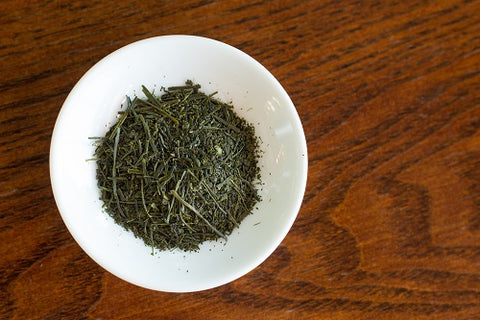
Sencha Homare
Next, I would suggest our Karigane. It is a less well-known Japanese tea, but might be the best to start with. It is a very accessible green tea. They make this tea with bright fresh green tea leaves, but deliberately include some of the stalk of the leaves. This gives the tea an exceptionally mellow, sweet, smooth, non-astringent, flavor. This is a great tea for people who think they don’t like green tea.

Karigane
Then you need to try at least one of the higher-end and INTENSE Japanese green teas, and I would recommend our Gyokuro. This tea has incredible deep, dark green leaves that produce a taste that is sweet, somewhat vegetal/fresh (in a good way), with a very intense almost viscous-brothy body. These leaves are shade-grown, which leads to the intensity of the color and the cup. This tea is also known as Jade Dew.

Gyokuro
Now for something completely different. Genmaicha. They drink tons of this tea in Japan, most of it coming from refrigerated soft-drink machines; seemingly on every corner of Japan. This is a blend of a basic Japanese green tea, with roasted brown rice kernels, and some of these kernels pop during the roasting process (some people call this “popcorn tea”). So in the cup you can taste the green tea and the toastiness of the rice. It’s a wonderful combination of flavors and gives a little more body to this traditional Japanese green tea.

Genmaicha
Lastly, for those people who those say green tea is just too darn light, thin, mild etc. Houjicha. It has the most body and dark color of any Japanese green tea. When you brew it up it will look like a medium-bodied black tea. They use a nice grade of a basic Japanese green tea. Then they toast the leaves, until they have a nice nutty-brown look and aroma to them. And that is how this tea cups up; toasty, medium to full-bodied, some mellow-sweetness and it has less caffeine than most green teas."
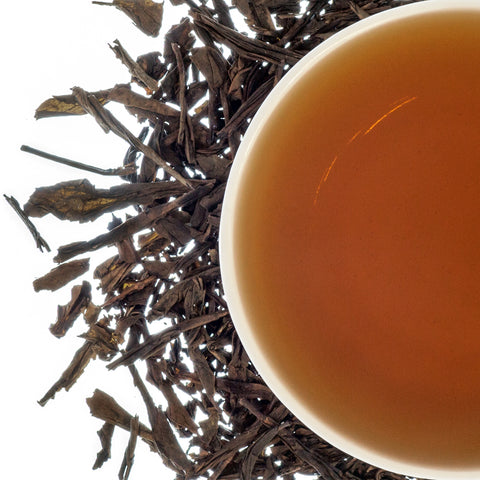
Houjicha
Customer:
"That’s great, thanks. It sounds like such a range of tastes from one country."
Me:
"Boy, what a fun tea journey you are going on. And you’ll probably impress the heck out of your son’s sweetheart. And I hope that all works out OK. If not, you’ve always got the tea."
Bill Waddington, owner
TeaSource
